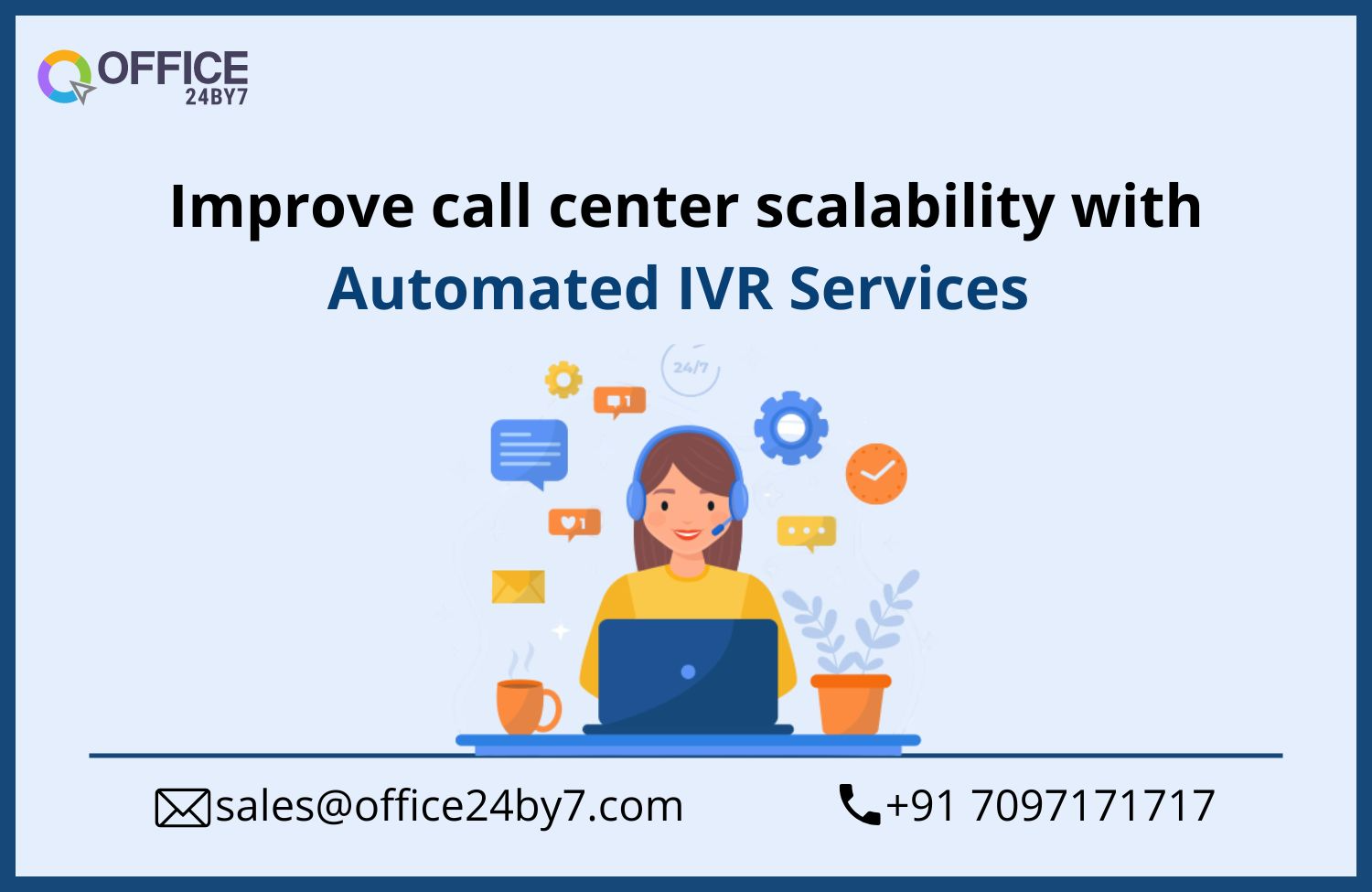Improve Call Center Scalability with Automated IVR Services

In today's fast-paced business landscape, call centers are vital in managing customer interactions and ensuring high-quality customer service. As companies grow and expand their operations, scalability becomes crucial to accommodate the increasing call volumes and maintain customer satisfaction.
One effective solution that addresses this challenge is the implementation of Automated IVR (Interactive Voice Response) services. By leveraging automated IVR solutions, call centers can enhance scalability, optimize resources, and deliver seamless customer experiences. This article will explore how automated IVR services empower call centers to achieve efficient and scalable operations.
Understanding Automated IVR Services
Automated IVR services refer to the technology that allows callers to interact with a computerized system using voice commands or touch-tone keypad inputs. This technology enables callers to navigate through a menu of options, retrieve information, and perform self-service tasks without needing agent assistance.
Automated IVR solutions streamline and automate various aspects of call center operations, including call routing, information retrieval, and basic issue resolution.
Enhancing Call Center Scalability
Scalability is the ability of a call center to handle fluctuations in call volume without compromising the quality of service. By implementing automated IVR service, call centers can significantly improve their scalability in the following ways:
1. Efficient Call Routing:
Automated IVR solutions can intelligently route incoming calls based on predefined criteria, such as language preference, caller history, or issue category. This ensures calls are directed to the most appropriate agents or departments, optimizing call center resources and reducing wait times.
2. Self-Service Options:
Automated IVR systems allow customers to perform routine tasks like checking order status, making payments, or updating account information through self-service menus. Call centers can offload many simple and repetitive queries by offering self-service options, freeing up agents to handle more complex and critical issues.
3. 24/7 Availability:
With automated IVR services, call centers can provide round-the-clock support to customers. Callers can access information and perform basic tasks anytime, reducing the need for extensive agent coverage during non-business hours. This flexibility enhances the call center's scalability, as it can efficiently handle call volumes outside regular working hours.
4. Intelligent Call Queuing:
Automated IVR solutions can intelligently manage call queues by providing estimated wait times, offering callbacks, or providing alternative contact channels. By implementing intelligent call queuing strategies, call centers can prevent bottlenecks and ensure a smooth flow of incoming calls, even during peak periods.
5. Seamless Integration:
Automated IVR solutions can seamlessly integrate with other call centers technologies, such as CRM (Customer Relationship Management) systems or ticketing platforms. This integration automatically retrieves customer information and calls history, providing agents with valuable context and streamlining call-handling processes.
Benefits of Automated IVR Solutions
Implementing automated IVR services in call centers offers several key benefits:
1. Enhanced Customer Experience:
Automated IVR systems provide customers quick access to information and self-service options, reducing waiting times and improving overall satisfaction. Customers appreciate the
convenience and efficiency of self-service, leading to increased loyalty and positive brand perception.
2. Optimal Resource Utilization:
Call centers can optimize agent utilization by automating routine tasks and offloading simple queries to self-service menus. Agents can focus on more complex issues that require human intervention, maximizing their productivity and expertise.
3. Cost Savings:
Automated IVR solutions can significantly reduce operational costs by minimizing the need for additional agents to handle call volumes. Additionally, self-service options eliminate the need for agent-assisted tasks, reducing staffing requirements.
4. Scalable Operations:
With the ability to handle increased call volumes, call centers can scale their operations seamlessly during peak periods or periods of high demand. Automated IVR services ensure customer inquiries are addressed promptly, maintaining service levels without compromising quality.
5. Data-driven Insights:
Automated IVR systems capture valuable customer data, including call statistics, issue categories, and customer feedback. Call centers can analyze this data to gain insights into customer behavior, identify areas for improvement, and make data-driven decisions to enhance their operations.
Conclusion
At Office24by7, we understand the critical role of call center scalability in delivering exceptional customer service. As a leading provider of automated IVR services, we offer tailored solutions that empower call centers to optimize operations and enhance customer experiences.
Our automated IVR Software enables efficient call routing, self-service options, and 24/7 availability, ensuring customers can access the information they need and perform routine tasks effortlessly.
By implementing Office24by7's automated IVR solution, call centers can unlock numerous benefits, including enhanced customer satisfaction, optimal resource utilization, and significant cost savings.
Our seamless integration capabilities allow for an effortless integration with existing call center technologies, providing agents with valuable customer context and streamlining call-handling processes.
We take pride in our commitment to providing scalable operations, allowing call centers to handle increased call volumes without compromising service quality. Through data-driven insights, Office24by7's automated IVR services enable call centers to gain valuable customer insights, identify opportunities, and make informed decisions to drive continuous improvement.
- Industry
- Art
- Causes
- Crafts
- Dance
- Drinks
- Film
- Fitness
- Food
- Games
- Gardening
- Health
- Home
- Literature
- Music
- Networking
- Other
- Party
- Religion
- Shopping
- Sports
- Theater
- Wellness
- News



